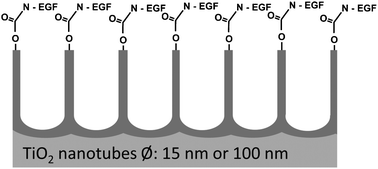Covalent functionalization of TiO2nanotube arrays with EGF and BMP-2 for modified behavior towards mesenchymal stem cells†
Abstract
In the present work we show the covalent immobilization of two bioactive molecules, epidermal growth factor (EGF) and bone morphogenetic protein-2 (BMP-2), on TiO2


 Please wait while we load your content...
Please wait while we load your content...